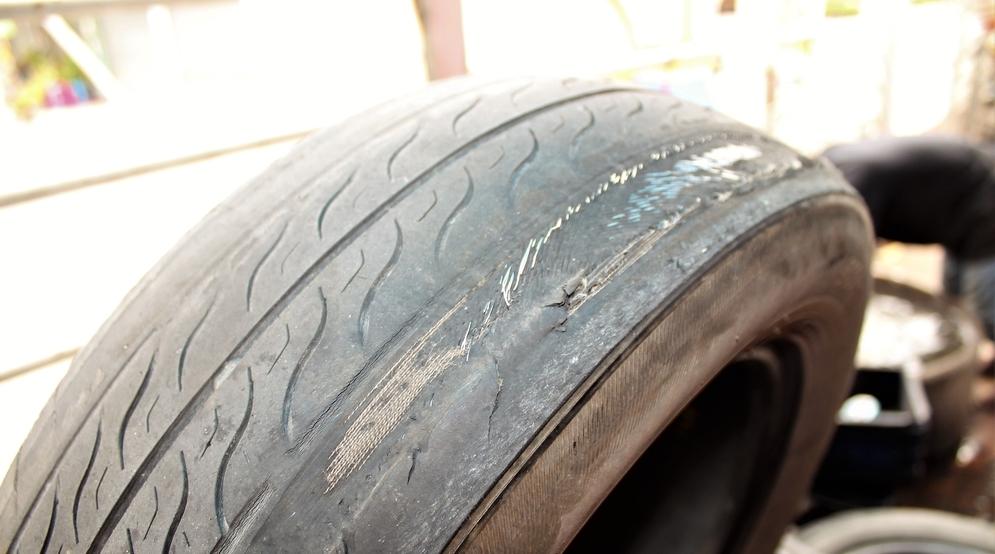Julius Atuhurra
Blavatnik School of Government, University of Oxford
Blog
In the days following the recent RISE webinar side event to the Global Education Summit, my mind has been fixed on Dr Goretti Nakabugo’s use of the analogy of the wheel alignment system of a vehicle to highlight why “just more money” is not enough to address the learning crisis affecting many LMICs if the component parts of the education system are not well aligned to achieve learning for all children.
The terrible effects on the tire in a misaligned car wheel system are quite vivid for everyone to see. Towards the inner side, the tire is completely wasted, and it is obvious this tire cannot be reliably used if one intends to embark on another long safari/journey (the police will likely stop you immediately when you hit the road, or you won’t reach your destination alive). Inevitably one must forget about this tire and buy a new one.

A sad and striking feature of this tire, however, is the outer part that shows the lost opportunity to achieve great value. It shows “what could have been” if only the wheel system had been well aligned from the start, and the tire reached its full potential. It could have gone so many places and done so many things.
This powerful illustration of an opportunity lost to an inefficient misaligned system struck me as a major takeaway from this webinar, as Dr Nakabugo referred to when she noted that the tire’s future was wasted by the misaligned wheel system.
Further, she emphasized the resource waste in terms of having to frequently replace tires in a faulty wheel system. This does not address the root cause but seemingly keeps the car on the road allowing it to complete a few more journeys even though at great cost per journey – very soon you are back to looking for resources for a new set of tires!
Thanks to the Education for All (EFA) and Millennium Development Goals (MDGs) agendas, many education systems in developing countries today are aligned to achieve school access for most children. In the last two decades, many schools have been constructed, teachers hired, basic instructional materials (desks, textbooks) procured and stocked in schools. To be clear, there is still a lot to do on this side of things, especially now with COVID-19 threatening to reverse the gains that were painstakingly made over the last two decades.
Yet, the COVID-19 induced school closures have offered the global education community a unique occasion to look closely at the injustice of the current situation. By forcing schools shut and exposing to everyone the characteristic inequities in our education systems, these closures have awakened many to the need for inclusive, efficient and effectively functioning systems as the bedrock and pulse for nation building. They have presented a once-in-a-lifetime opportunity to look straight at and tackle head-on the root causes of the learning crisis. Key players such as parents who have looked on in utter despair at their children getting close to nothing out of state-arranged remote learning options, such as radio lessons and printed reading materials, now get it. All the while, children from wealthy families have in some cases expanded their opportunities to engage online with their teachers (and peers) and to take additional privately tutored lessons. Leveraging the lessons of this pandemic, we must not waste such a unique opportunity to build back better.
Returning to my key takeaway from the webinar: the pain of looking back and asking, “what would have been”. What if we looked at each one of these tires in their brand-new state as reflecting the potential for the education system to deliver learning to each child?
Look at the puzzling questions that come to mind when we view the wasted tire through this lens. One key question that just won’t go away is: “why was the system never aligned to save this child’s future and allow them to achieve their immense potential?” Another one is the question the wasted tire itself is asking when it looks at the little remains of its outer part that did not suffer as much damage: “how come the wheel system was never aligned even when it was very evident to everyone that I had this great potential to achieve great stuff if only the system was aligned?”
Who is tracking this tire to find out where it is right now and what it is being used for? How many similar tires have suffered the same fate, and how many more (currently new tires) are just getting off the shelf today to begin on this unnecessarily futile journey, becoming another wasted tire?
The webinar made a strong case for directing attention and resources to the root causes of the learning crisis. Aligning education systems for learning turns the page from indulging in box-ticking exercises that give the impression of progress, to tackling core systemic issues that lie at the root of the learning crisis. Will the scale of the unprecedented COVID-19 induced school closures and the holding of the Global Education Summit for Financing GPE 2021 – 2025 be remembered as the two events that turned around global education to benefit all children? This is exactly what is at stake as Prime Minister Boris Johnson and President Uhuru Kenyatta rally each one of us to raise our hand in support of quality education for all children everywhere.
RISE blog posts and podcasts reflect the views of the authors and do not necessarily represent the views of the organisation or our funders.